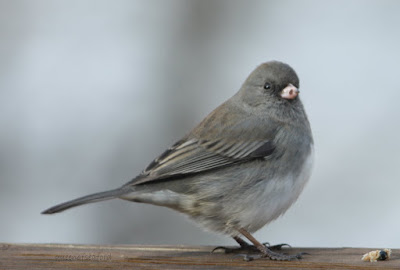Some of us think of Dogwood in the early spring as their bracts begin to open to show its flower. The bracts get larger and turn white..

...or pink or red.

The sight of the dappled white bracts in the landscape is classic Cornus florida. Whether it is through the leaves ---

or out in the open---

Nothing says spring like the dogwood in bloom.
Not sure whether your dogwood will bloom in the spring? Check out the buds for its flowers in the fall.

The dogwood is a native tree to the eastern United States, zones 5-9. It is considered an understory tree, one that likes dappled sunlight. That being said, it can handle full sun. While it is said more shade in the south, I can tell you some of the dogwood I see in Greenwood, South Carolina are in full sun and seem to be doing well. It likes moist, fertile, well drained soils.
Wildlife benefits from the dogwood's berries. Many birds and squirrels enjoy the fruits. The references say propagation can be done by greenwood cuttings in spring, hardwood cuttings in summer, or seed. We have many seedlings throughout our woods.
The leaves are opposite, simple leaves which turn the most glorious red to purple-red in the fall. They are oval to ovate about 3- 6 inches long and half that wide. The leaves appear after the bracts open with the Cornus florida. Cornus kousa, leaves are first then the bracts open.
In addition to the beautiful foliage in the fall, the bright red berries often make the tree appear to still have its red leaves.
The wood is fine grained and very hard. There are many uses for the dogwood timber; tool handles, shuttles, wheel cogs, pulleys, and jeweler's blocks to name just a few.
The bark on mature trees is dark and is deeply ridged in small blocks, much like an alligator's skin.
The tree can grow up to 30 feet tall. The shape is rounded with a flattened top, branching horizontally.
If the tree is stressed it is more suseptible to disease. In recent years Dogwood Blight has spread throughout most of the range of the dogwood. It is an anthracnose disease that thrives in cool, moist weather. This disease attacks the leaves, eventually killing the tree.
There are different kinds of Cornus, Cornus florida, the native dogwood, Cornus kousa -a Japanese dogwood that blooms about 2-3 weeks later than C. florida and blooms after the leaves have emerged. There is an evergreen dogwood that I find most incredible--Cornus angustata 'Empress of China'-- a beautiful tree that in milder climates is evergreen. The bracts are impressive.
Here is one outstanding tree in the Virginia State Arboretum at Blandy. I believe this is 'Empress of China' but I can't find my notes from the trip right now.

You may remember I am big on foliage that turns red in the fall. That is part of the reason that I am profiling this tree at this time of year. The other reason is that the Abbeville Cooperative Extension office sells trees in the late fall, delivery is tomorrow. I bought 3 red dogwoods, 3 redbud, and 2 pecan trees. I look forward to some spring color!!
As always here are my references--
US Forestry Service
UCONN
Floridata
Next Tuesday-- the tree -Persian Ironwood
 words and photos by Janet,The Queen of Seaford.
words and photos by Janet,The Queen of Seaford.






















































